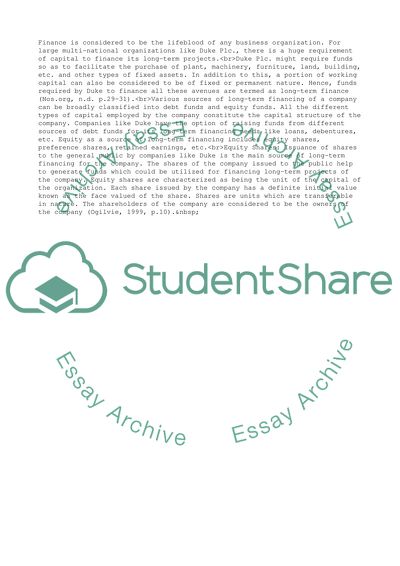Cite this document
(Sources of Capital in Duke Plc Assignment Example | Topics and Well Written Essays - 2500 words - 2, n.d.)
Sources of Capital in Duke Plc Assignment Example | Topics and Well Written Essays - 2500 words - 2. Retrieved from https://studentshare.org/business/1777082-financial-management
Sources of Capital in Duke Plc Assignment Example | Topics and Well Written Essays - 2500 words - 2. Retrieved from https://studentshare.org/business/1777082-financial-management
(Sources of Capital in Duke Plc Assignment Example | Topics and Well Written Essays - 2500 Words - 2)
Sources of Capital in Duke Plc Assignment Example | Topics and Well Written Essays - 2500 Words - 2. https://studentshare.org/business/1777082-financial-management.
Sources of Capital in Duke Plc Assignment Example | Topics and Well Written Essays - 2500 Words - 2. https://studentshare.org/business/1777082-financial-management.
“Sources of Capital in Duke Plc Assignment Example | Topics and Well Written Essays - 2500 Words - 2”, n.d. https://studentshare.org/business/1777082-financial-management.


